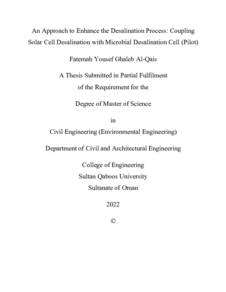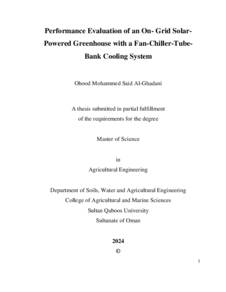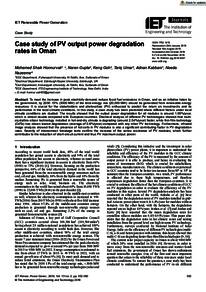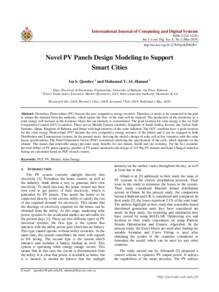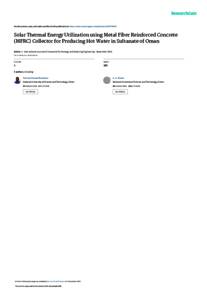Document
An Approach to enhance the desalination process : coupling solar cell desalination with microbial desalination cell (Pilot).
Publisher
Sultan Qaboos University.
Gregorian
2022
Language
English
English abstract
Water scarcity is a major issue in the world, with an increase in population growth rate there is an
increased stress on fresh water demand. Desalination is a way to combat this issue and a solution
to provide potable water. There are different types of desalination processes such as thermal,
mechanical, and electrical processes, but they are energy intensive and costly. The worldwide goal
in industries is to follow sustainable methods and environmentally friendly techniques to provide
solutions for such problems. Solar Desalination works by using thermal solar energy to desalinate
water through the concepts of heating, evaporation, and condensation of water. Microbial
Desalination Cell (MDC) is a technology that uses exo-electrogenic microorganisms to generate
electricity and desalinate water through ion exchange process. Although MDC and Solar
desalination have been researched separately and have been proven successful in terms of the
removal of salt in water and energy production, there hasn't been enough research done on the
coupling of MDC with Solar Desalination Cell. The aim of this study was to evaluate the
performance of MDC that was coupled with solar desalination to provide a renewable energy
option for water desalination. In this study, a basic plywood solar basin with thermal absorbers
installed, was used to desalinate saline water in three cycles with three different salt concentrations
(25g/L, 35g/L, 45g/L), and the output of it was desalinated using a three chambered MDC with an
anode chamber, cathode chamber, and a middle desalination chamber. The catholyte used was
ferricyanide coupled with air cathode, and the anolyte's main component was bacteria extracted
from cattle's rumen. The external resistance used in the enrichment was 1000 Ω, 10 Ω, and 1 Ω,
and the external resistance used in the desalination cycles was 1Ω. The results showed that solar
desalination had an efficiency of 43%, 20%, and 21% respectively. By coupling it with MDC, the
removal efficiency increased to 96%, 99%, and 98% respectively. The COD removal was found
to be 29.5%, 31.2%, and 31.7%, and the Columbic efficiency was found to be 0.314x10-5
, 0.65x10-5, and 0. 51x10-5. It's recommended to couple microbial desalination with solar desalination to
provide potable water specially in countries like Sultanate of Oman which are exposed to high
solar radiation that could make it more efficient than other places in the world.
Member of
Resource URL
Category
Theses and Dissertations

